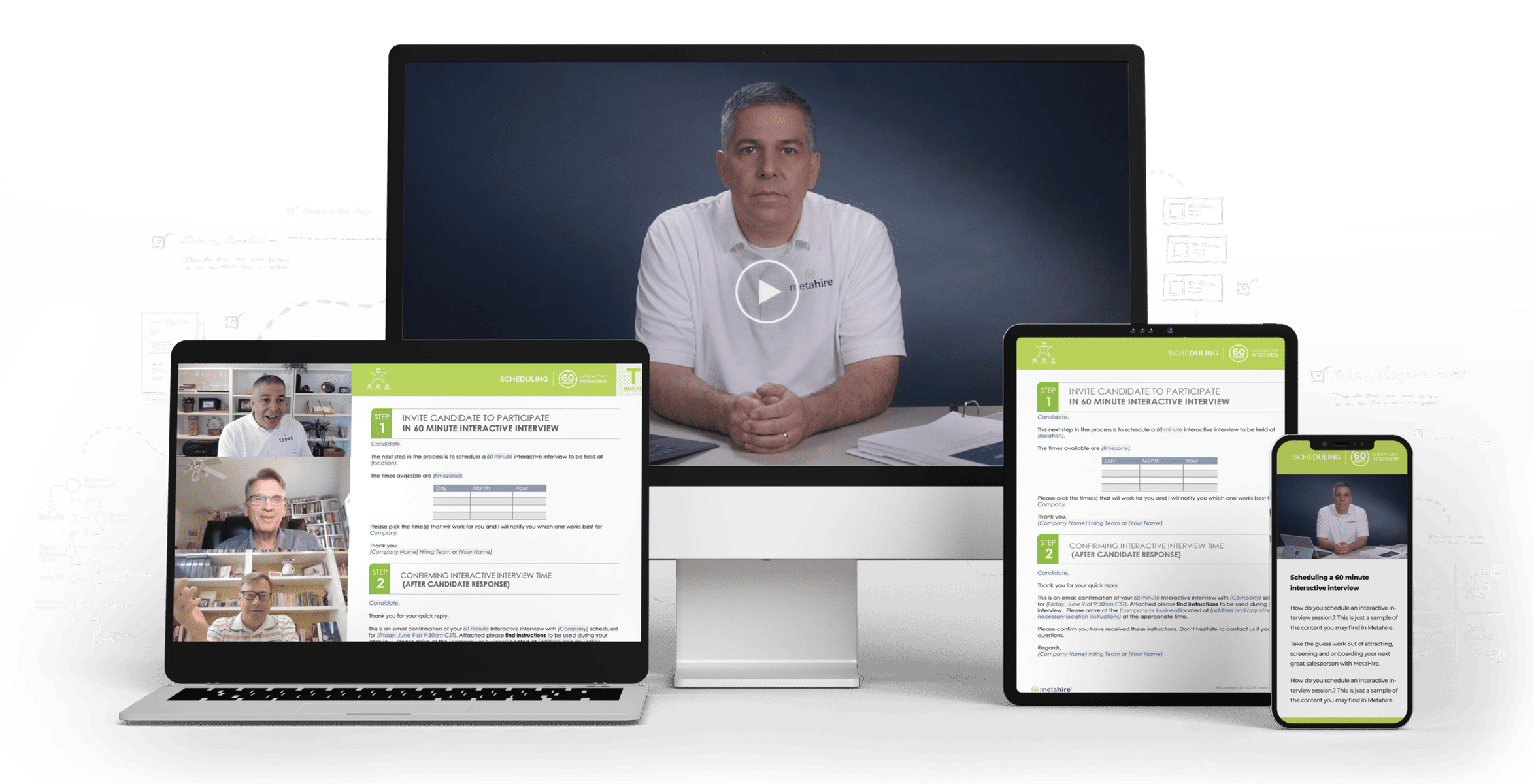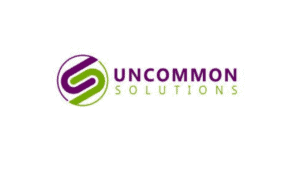Weighing Benefits Against Risks
We’ve all heard the notion of “always be closing.” The prevalent belief among salespeople is the sales strategy of going for the ‘Yes’ is the quickest route to a deal. But is this conventional wisdom steering your team away from better-aligned opportunities and deeper client relationships? You must question this belief system to transform your sales team into a revenue-generating machine. Let’s dissect the benefits and risks to see what serves your team and clients better in the long run.
The Perceived Benefits
Speed and Efficiency
It’s believed that going for the ‘Yes’ is a quicker way to seal the deal. Fewer questions are asked, saving time and potentially moving to a close faster. Many believe that targeting ‘Yes’ saves time by cutting down on the back-and-forth. It feels efficient and gives salespeople an immediate sense of accomplishment.
Immediate Business Opportunities
With an uncertain future, many feel it’s better to secure a deal today than risk losing it tomorrow. Closing a deal, any deal, looks better on paper than not closing at all, at least in the immediate context. This perception fuels the belief that more ‘Yes’-es will lead to more business over time.

Flexibility in Sales Skills
It requires fewer sales skills, making it easier for newcomers in the industry to adopt this approach. For those new to the sales game, going for ‘Yes’ appears to require a lower skill set, making it easier to onboard new salespeople.
Perceived Path of Least Resistance
This approach seems like the shortest route to closing a deal. Less confrontation aligns with the path of least resistance, poses fewer difficult questions, and an overall smoother process—or so it seems. Your team may feel more likable as they strive to answer all questions and demonstrate their expertise.
The Underestimated Risks
Client Dissatisfaction
Opting for ‘Yes’ can result in issues that arise later but could have been addressed earlier, affecting long-term relationships. When you rush to ‘Yes,’ critical questions go unasked, resulting in later misunderstandings, dissatisfaction, and weakened client relationships.
Quantity over Quality
Winning business that is either too small, not profitable, or not in your wheelhouse can be detrimental in the long run. You might win business that isn’t profitable or aligned with your expertise, causing you to spread resources too thin.
Inadequate Targeting
In the hurry to close, you might be conversing with someone who can’t seal the deal, wasting your time and theirs. You might end up speaking to someone, not the decision-maker, wasting resources that could be used more effectively.
Lack of Differentiation
This approach might not set you apart from competitors, diminishing your unique value proposition. When you’re not asking the hard questions, you miss the opportunity to differentiate yourself from competitors.

False Perception of Time-Saving
The belief that you’re saving time is often more perception than reality, especially when you factor in the time spent dealing with issues that arise later. You might go through all the steps, only to find out the prospect can’t afford your services, resulting in a wasted effort.
Assumptions and Misunderstandings
A ‘Yes’ mentality often skips the crucial step of understanding the prospect’s actual needs and values, leading to flawed assumptions about a client’s needs and abilities without fully understanding their situation.
So, Do the Benefits Outweigh the Risks?
The short answer is it depends. However, experience strongly suggests that the risks often outweigh the benefits. Going for the ‘No’ can be a pathway to more meaningful conversations, a clearer understanding of client needs, and, ultimately, more profitable and fulfilling relationships.
It’s time to move away from the comfort zone of always going for the ‘Yes’ and train your team to engage in deeper, more valuable conversations with prospects. The objective isn’t merely to close a deal but to establish a lasting relationship built on genuine understanding and value.
Redefining Your Sales Strategy – Challenging Common Misconceptions
Time-saving Illusion
Don’t buy into the notion that going for the ‘Yes’ is a time-saver. The time you think you’re saving upfront can often lead to hours of problem-solving later. Instead of aiming for a quick ‘Yes,’ opt for consultative selling.
Initial Conversation
Old Way: You engage in a 15-minute call, targeting to get quick affirmative answers, asking simple questions like, “Do you need to improve your supply chain?”
New Way: Invest more time in the initial conversation to uncover underlying issues. You might ask, “Can you walk me through your current supply chain process and identify any bottlenecks or inefficiencies you’ve observed?”
Benefits of the New Way
- Deep Insight: You learn more about their needs, not just surface-level symptoms. This prepares you for a tailored proposal, increasing the chance of a meaningful engagement.
- Building Trust: You’re showing genuine interest in solving the prospect’s problem, not just selling a solution. This often builds greater Trust.
- Risk Mitigation: You can more accurately gauge whether this prospect aligns with your offerings and capabilities, reducing the risk of future issues.
Post-Sale
Old Way: A quick ‘Yes’ may lead to mismatched expectations, requiring hours of follow-up calls, potential renegotiations, and even client churn.
New Way: A more productive initial conversation aligns expectations on both sides, leading to a smoother post-sale relationship with fewer surprises and a better overall client experience.

While this consultative approach may require a more significant time investment up front, it saves you countless hours of ‘cleanup’ later. It nurtures a healthier, longer-lasting relationship with the client.
Essentially, the goal is to focus on quality over speed, aiming for long-term relationships rather than quick wins. Remember, your role is not merely to close a deal but to sustainably build a relationship that benefits both parties.
Closing Rates
Let’s debunk the idea that a ‘Yes’- focused approach will close more sales. More closed deals don’t necessarily equate to more value generated—either for your team or clients. Instead of aiming for high closing rates, focus on value-based closing.
Closing the Deal
Old Way: Your team is pressured to close deals quickly, counting each ‘Yes’ as a win regardless of how well the client fits your service offering. The strategy focuses purely on numbers: the more ‘Yes’-es, the better.
New Way: Shift the metric from ‘number of deals closed’ to ‘value of deals closed.’ Your team should strive to close deals aligned with the company’s core expertise, even if this means closing fewer deals in number.
Benefits of the New Way
- Clients for Life: Closing the right deals improves customer retention and maximizes Customer Lifetime Value (CLV). These clients are more likely to use additional services, refer you, and become long-term partners.
- Resource Optimization: By focusing on deals well-suited to your capabilities, you allocate resources more effectively, from onboarding to customer service, thereby improving overall operational efficiency.
- Reputation Management: Closing deals you’re well-equipped to handle can ensure successful project delivery and happy clients, strengthening your market reputation.
Post-Deal Evaluation
Old Way: You celebrate the sheer number of ‘Yes’-es and then scramble to fulfill promises, sometimes realizing too late that you’ve bitten off more than you can chew.
New Way: Each closed deal undergoes a review to assess how well it aligns with company goals, client satisfaction, and overall project profitability. This feedback loop informs future sales efforts.
Adopt a More Refined Metric
Instead of merely looking at closing rates, examine each deal’s value. Adopt metrics like ‘profit per deal,’ ‘customer satisfaction,’ and ‘referral rates’ to measure the true impact of your sales efforts.
The key here is to remember that closing a sale isn’t just a numbers game; it’s the opening chapter in a potentially long and mutually beneficial relationship. Ensure you’re developing a story you and your client will want to continue.

Quality Over Quantity
Don’t assume that more ‘Yes’-es mean more sales. It often leads to poor-quality engagements. Instead of chasing quantity, prioritize deal quality.
Sales Pitch and Outreach
Old Way: Sales teams often engage in high-volume outreach to generate as many ‘Yes ‘-es as possible. This mass approach generally targets a broad audience with templated messages and offers.
New Way: Adopt a targeted outreach strategy, identifying high-value prospects that align closely with your unique selling proposition. Customize your messages to address specific pain points, providing immediate value and opening the door to meaningful dialogue.
Benefits of the New Way
- Focused Attention: The quality of your sales conversations will improve when you’re not juggling a hundred weak leads. This lets you dive deeper into each prospect’s needs and provide tailored solutions.
- Increased Conversion: When speaking directly to a prospect’s unique needs, they are more likely to see the value in your offering, leading to higher conversion rates for quality leads.
- Resource Allocation: By narrowing the funnel, your team can allocate time and resources more efficiently, focusing on deals more likely to close and be profitable in the long run.
Sales Follow-Up and Relationship Management
Old Way: Follow-up often falls by the wayside when you go for quantity. Teams cannot nurture potential leads properly, leading to lost opportunities and poor client relationships.
New Way: With a more selective list of quality prospects, your team can engage in effective follow-up and relationship management, including personalized check-ins, tailored content delivery, and more in-depth consultation.
Refine Your Sales Process
Implement into your sales process strategies involving engaging clients through empathetic conversations, personalizing solutions, and building trust through genuine connections. Start analyzing how many deals you’re closing and what kind of deals they are. Focus on understanding each client’s unique pain points, desires, and financial goals.
Focusing on the quality of deals over quantity sets the stage for sustainable growth, customer satisfaction, and long-term profitability. Ultimately, your sales strategy should not just be about making a sale but also making the right sale.
Replace your elevator pitch with a fresh Stand Out Introduction using AI
Building Trust Through ‘No’: A Shift in Sales Strategy
The most sustainable relationships are built on trust. In sales, trust is your most valuable currency. Your sales team’s primary objective should be to earn trust by focusing on what genuinely benefits the prospect. Sometimes, that means going for the ‘No’ to encourage an open dialogue, where both parties can speak freely and get to the heart of the matter. This level of truth in conversation ensures that the time and resources invested in the deal are not wasted and are directed toward creating a fruitful partnership.
The Initial Sales Conversation
Old Way: Sales representatives usually go into conversations with a ‘Yes’ mentality, focusing on how to make the prospect agree to a deal as quickly as possible. This often leads to glossing over crucial details and avoiding tough questions that may cause the prospect to hesitate.
New Way: Flip the script. Train your team to be comfortable with the word ‘No.’ A ‘No’ can often be the starting point for an open and honest dialogue, allowing both parties to resolve the core issues.
Benefits of the New Way
- Transparency: A ‘No’ lets you openly discuss what the prospect might consider deal-breakers, allowing you to address concerns upfront rather than down the line.
- Targeted Solutions: When the prospect is comfortable enough to say ‘No,’ you learn more about their specific needs and can tailor your solution accordingly.
- Resource Optimization: Both your team and the prospect spend time and resources more wisely, as the ‘No’ quickly weeds out ill-fitting opportunities, allowing everyone to focus on viable solutions.
Long-Term Relationship Building
Old Way: With the rush to get to ‘Yes,’ sales reps might close deals that look good on paper but don’t create long-term value. This lack of foresight can result in client dissatisfaction, churn, and tarnished reputation.
New Way: Going for the ‘No’ creates a natural filter. The clients who say ‘Yes’ after such honest conversations are more likely to be long-term partners who trust your expertise and value your service.
Elevate Your Sales Strategy: Trust as Currency
Measure the level of Trust in your client relationships as meticulously as you would any other KPI. Consider utilizing trust-based metrics alongside traditional metrics to understand your sales effectiveness better.
Your ultimate aim should be to close a sale and open a relationship. Trust is the foundation of any strong, sustainable relationship, and sometimes, the best way to build that Trust is to embrace the power of ‘No.’
Internalize This Transformational Mindset
Grasping and accepting that the risks outweigh the benefits is a transformative experience. And like any profound change, it may come with challenges. However, the rewards for more robust, profitable client relationships and a more fulfilled sales team are worth the effort. It will revolutionize not just how you sell but how you think about sales. And in the rapidly evolving business landscape, that’s a competitive edge you can’t ignore.
This shift in your selling approach will lead to more meaningful engagements, a more committed team, and a more profitable bottom line. It’s not just about getting to a ‘Yes’; it’s about arriving at the Right Answer for everyone involved.
So go ahead and take these next steps and internalize this new approach. The change may be challenging, but it will transform your sales process to deliver long-lasting benefits for you, your team, and your clients.







